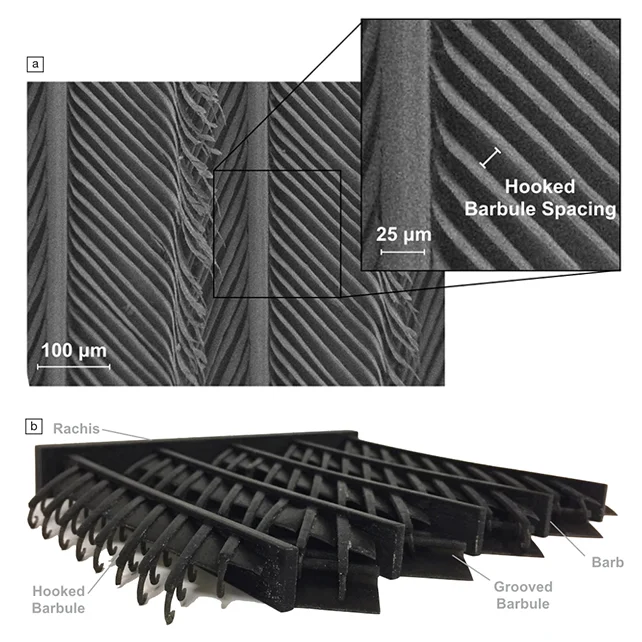Barbs of a feather support flight together
Barbules as connecting elements between feathers. (a) Their spacing is measured as the distance between barbules. (b) An additively manufactured bioinspired model demonstrates the orientation of the barbule membrane flaps between barbules.
By Stephen Riffle February 22, 2019
If given unlimited funds, Tarah Sullivan would develop a synthetic feather—one that accurately recreates the nanoscale and microscale properties of avian flight feathers. Feathers hold a wealth of structural secrets that, if mimicked, could inspire the design of feathered planes and may have the potential to mitigate disaster during earthquakes. In a study recently published in Science Advances, Sullivan, Marc Meyers, and Eduard Arzt tap into the mathematical and submicroscopic properties of bird flight.
Read the full write-up on MRS Bulletin.
Read the article in Science Advances.


